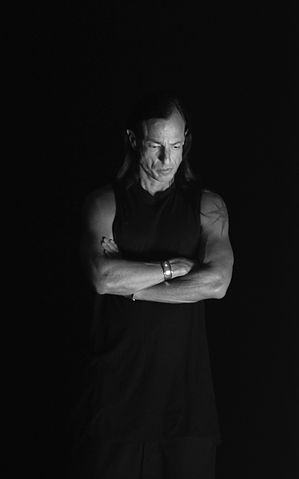Rick Owens: Fashion’s Dark Prince. Creator of “It” look moto jackets and men’s skirts. God of Gothic grunge.
What does this edgy, cerebral designer have in common with you and me, the average Gap-clad content marketer?
More than you think.
Rick Owens is not just a craftsman, artist, provocateur and purveyor of beautifully made, high-end, avant garde clothing.
He’s also a savvy entrepreneur who, with his fashion-muse wife, Michèle Lamy, runs a well-oiled marketing machine.
Owens understands the people most likely to buy his clothes—and how to invite these lucrative prospects into his brand story.
Part of Owens’ success lies in his own appealing persona. Owens’ mix of Goth body-builder, classics-referencing intellectual and friendly surfer dude proves irresistible to the media editors and fashion insiders who influence merchandising buys.
But Owens builds broader appeal to a much larger audience—with content.
Rick Owens intuitively understands the “art of communicating with your customers and prospects without selling,” i.e., content marketing as defined by The Content Marketing Institute.
As a content marketer, you can learn a lot from him.
Video: a powerful content marketing tool
Today content marketers use any and all content tools to “communicate without selling”—blogs, social media, contests, games, images, video, podcasts, email, apps, infographics, music, books, print, performance art and more.
In my niche—luxury ecommerce copywriting—runway videos are a valuable content marketing tool. And not just for the drama and entertainment they give our customers. The shows also let us share emotion-laden themes, inspirations and stories that help us differentiate and position products in our customers’ minds.
After watching scores of runway videos each season, my copywriting team and I have a gut instinct about which designers do these events right.
By “doing it right,” I don’t mean just creating entertaining spectacle. I mean positioning clothes to the customers most likely to buy them.
Rick Owens does it right.
Fashion marketer’s reality check
The average American woman is 5’ 4” tall, weighs 166 pounds and wears a size 14 dress. With 35% of us identifying as African American, Hispanic or Asian, many American customers have dark hair and skin.
Yet 83% of all models slouching down the catwalk are fair skinned and almost all are very tall and extremely thin.
The vast majority of designers represent their products with narrowly defined, one-note beauty. A rarefied—and some feel, racist—form of womanliness.
Not Owens.
Rick Owens: Designer. Hero. Content Marketer.
For his Spring 2014 collection, Owens chose real women—athletic, honestly-sized, mostly African American—for his runway show.
It was a courageous, ground-breaking step.
And a fantastic content marketing move.
Take a look.
3 content marketing takeaways from Rick Owens
Here’s what you can learn from Rick Owens:
- Do what scares you. Instead of hiring models, Owens worked with four American sororities and stepping teams. And rather than training them to traipse down the catwalk in a neurasthenic trance, he let them do what they do best: these warrior women stomped, marched, thumped their chests and stared down the status quo with their don’t-tread-on-me “grit faces”—the visage steppers use to intimidate competition. Take a lesson. “Do things that scare you, ” as content marketing veteran Ann Handley advises. Break out of your same old, safe old content mold.
- Make the customer the hero of your brand story. All too often marketers focus myopically on their product and its features, benefits and brand story. In fashion this traditionally means “aspirational” marketing, glorifying the slender sylphs whom stylists imagine we want to look like. But Owens proves that the best marketing is always customer-centric, an exciting narrative that pulls the customer into the story and lets her see herself as the hero.
- Align your product with your customer’s values. As a marketer you know the wisdom of turning product features into customer benefits. But today you need to take benefits a step further, aligning them with your customer’s values. Rick Owens did this big time. And not just through his choice of models—but also through the product itself. In contrast to the corseted, caged and sky-high heeled “looks” presented by most designers, Owens put his steppers in comfortable high-top trainers that helped them march, stomp and dance with complete freedom. Because “these women needed to move,” as Style.com’s Tim Blanks notes, the designer’s “clothes were adjusted accordingly…it was a revelation to see Owens’ clothes so transformed…” In transforming his product, Owens flipped fashion’s exclusive and dictatorial values upside down. The clothes not only demonstrate practical benefits: comfort, ease, longevity, but also more subtle, psychosocial benefits: freedom, strength, independence and creativity—the emotional benefits that drive buying decisions.
Give us the skinny
What do you think of Rick Owens’ Spring 2014 runway show? Can you see yourself using Owens’ rule-breaking precepts in your own marketing? What’s the upside—or downside—for your brand? Please share your opinions in Comments.
Rick Owens image courtesy of Wikimedia Commons.


Leave a comment.